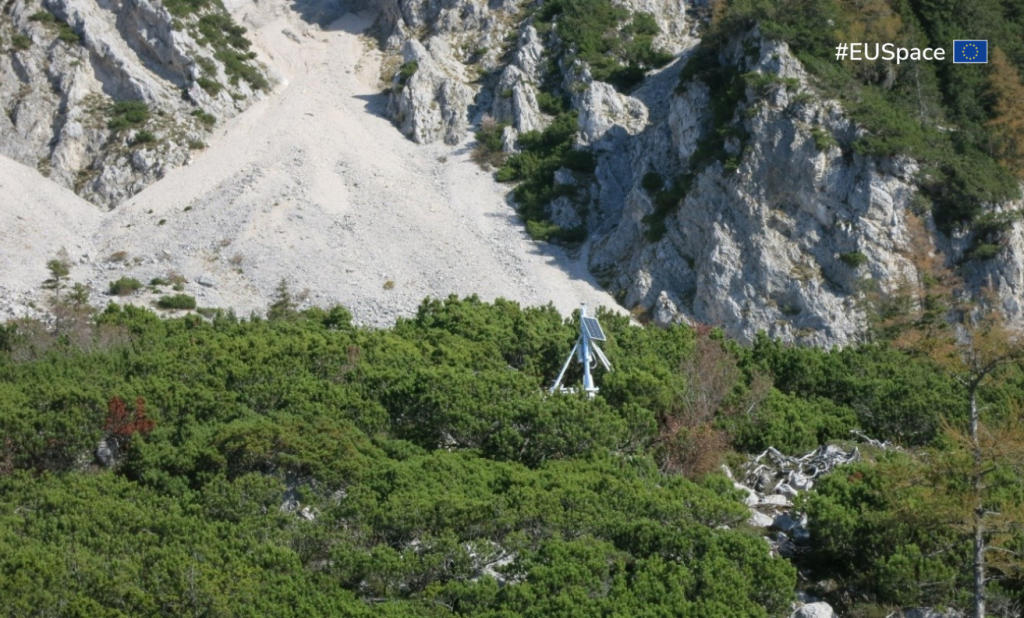The GIMS Project – Paving the way for more detailed monitoring through EU Space synergies

The GIMS Project started in November 2017 and utilised satellite navigation systems to create a low-cost monitoring service that can detect landslide motion. It was the first EUSPA project to combine GNSS, Earth Observation radar data (SAR) and Inertial Measurement Units (IMUs) technologies, paving the way for more effective and widespread land monitoring. The project was coordinated by GReD, a spin-off SME of the Politecnico di Milano.
How does GIMS work?
GIMS stations are light, independent structures and can be easily installed close to landslide areas. Each solar-powered station has software fully equipped to process the data of GNSS, SAR and IMUs. The software can harness data from Galileo GNSS signals through the internet and Sentinel-1 SAR data directly from Copernicus servers, using cost-effective antennas and receivers. Inertial sensors are placed inside to raise alarms for sudden movements. Once all this data has been collected, any land deformation can be identified, and a comprehensive report can be made to the relevant authorities.
Key achievements so far
GIMS stations were built for testing purposes by project partners in two known landslide areas in Slovenia. These GIMS stations proved vital in 2023 when a potential landslide was detected after a period of heavy rainfall in the village of Koroška Bela. GReD and end-user GeoZS, the Geological Agency of Slovenia were able to provide the authorities with real-time information on the landslide, which led to the evacuation of approximately 900 residents for 3 days. Although other devices such as drones were used during the operation, the terrain was too overgrown for GNSS on its own to provide accurate information. Thanks to GIMS ability to use Galileo’s satellite system, GIMS coordinator GReD was able to provide hourly updates and confirm the need for an evacuation.
The upkeep of the GIMS stations in this area was made possible by GeoZS, who continued to purchase the monitoring service from GReD and the stations maintenance from Saphyrion after the project ended.
The EUSPA Horizon Europe GIMS Project delivered tangible benefits of innovative technology for citizen safety. This success highlights the vital role of SMEs like GReD and should act as a motivation for other companies to collaborate to answer the ongoing Horizon Europe call, fostering continued advancements in Earth monitoring.
Media note: This feature can be republished without charge provided the European Union Agency for the Space Programme (EUSPA) is acknowledged as the source at the top or the bottom of the story. You must request permission before you use any of the photographs on the site. If you republish, we would be grateful if you could link back to the EUSPA website (http://www.euspa.europa.eu).